Your Closet Isn’t a Mess, It’s Just Misunderstood: A Pro’s Guide to Getting Organized for Good
I’ve seen more closets than I can count. They’ve been everything from tiny, jam-packed city apartment nooks to sprawling walk-in rooms that felt like a private boutique. But honestly, they all tell the same story. A closet is way more than just a box for your clothes; it’s where your day begins. When it’s a total mess, that chaos bleeds into your morning, adding a layer of stress before you’ve even had your first sip of coffee.
In this article
This isn’t about making your closet look like it belongs in a magazine (though that can be a pretty nice bonus). It’s about creating a system that actually works for your life, your clothes, and your space. It’s about respecting the money you’ve spent on your wardrobe and the time you spend getting ready. So, let’s walk through this process from the ground up, just like I would with a client.
The Foundation: A Mindful Edit, Not a Ruthless Purge
Everyone’s first piece of advice is to just start throwing things out. They tell you to be “ruthless,” but I’ve found that approach almost always leads to regret. Clothes are personal! They hold memories, hopes, and sometimes, a little bit of who we used to be. A much better way to go about it is with a thoughtful, mindful assessment.
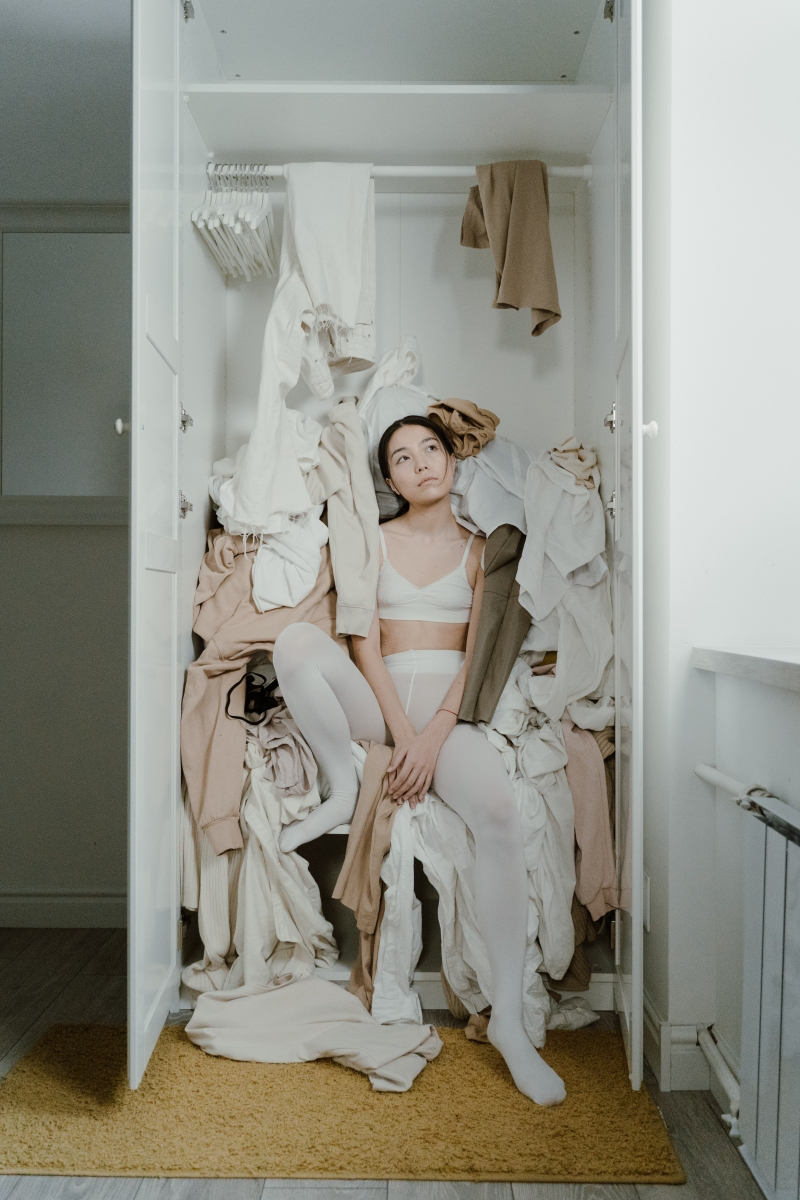
This is not a one-hour project. Heads up: you’ll probably need a full weekend day, so don’t try to rush it. Get your space ready with good lighting, a full-length mirror, and a simple sorting system. I swear by the four-category method:
- Keep: Simple. These are the clothes that fit you right now, are in good shape, and you genuinely feel great wearing. This is your active wardrobe.
- Mend/Clean: This is the action-list pile. The coat with the missing button, the blouse with a small stain that needs a dry cleaner’s magic. Put these items in a dedicated bag. Quick tip: Give yourself a two-week deadline to get these things fixed. If they’re still in the bag after that, you have to be honest with yourself about whether you’ll ever get around to it.
- Donate/Sell: This is for perfectly good clothes that just don’t serve you anymore. Maybe they don’t fit your body or your current lifestyle. Be realistic here. Only pristine, current, or high-end designer pieces are likely to sell on sites like Poshmark or The RealReal. For everything else, give it a new life by donating to a local Goodwill or a community shelter.
- Unsure: This is the secret weapon, the box that prevents major regret. It’s for that sentimental dress or the expensive sweater you’ve never actually worn. Pack these items into a box, label it with today’s date, and stick it in the garage or a storage area for six months. If you haven’t missed or even thought about any of it in that time, you can donate the whole box without a second thought. It’s a fantastic safety net.
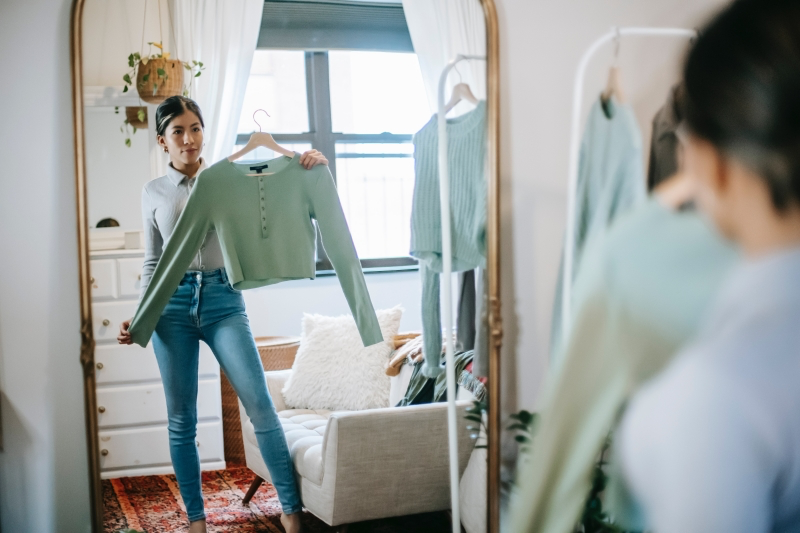
Know Your Space (The Boring But CRUCIAL Part)
Okay, before you put a single thing back in, you have to understand the closet itself. I once had a client who had a gorgeous new system installed, but the main hanging rod was mounted straight into drywall. A couple of weeks later, the weight of their winter coats pulled the entire thing down. A total disaster. You have to check the structure first.
Your closet rods and shelves can’t hold infinite weight. A typical closet rod can handle about 50 pounds per linear foot if it’s properly supported. A bunch of heavy winter coats or suits can easily top that. So, the first thing you need to do is locate the wall studs (the vertical wooden beams inside your wall). A basic stud finder is a game-changer and only costs about $20 at Home Depot or Lowe’s. Your hardware, especially the brackets holding up rods and shelves, MUST be screwed into these studs for maximum support.
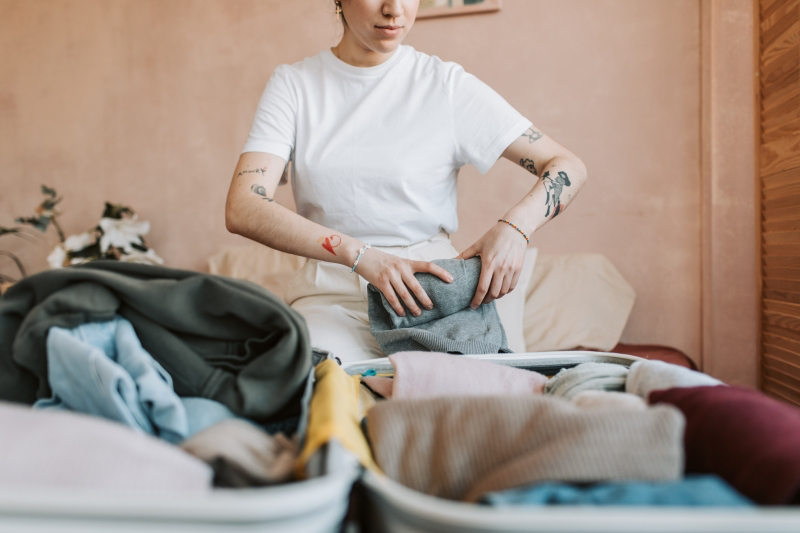
The same goes for shelves. A long shelf without enough brackets will start to sag in the middle. For standard particleboard shelves, you should have a support bracket at least every 32 inches. When you’re stacking heavy stuff like jeans or sweaters, try to spread the weight out instead of making one huge pile right in the center.
Oh yeah, and let’s talk airflow. A closet is a small, sealed-off space. Without air moving around, it can get musty, especially if you live somewhere humid. Never pack clothes so tightly that they’re squished together. If your closet feels stuffy, leaving the doors open for an hour a day can help. For a more serious solution, you can get a renewable dehumidifier canister with silica beads for about $15 online. It sucks up moisture, and you can “recharge” it just by plugging it in.
The Pro’s Toolkit: Hangers, Bins, and Beyond
The tools you use are just as important as the system. Using the wrong stuff can actually damage your clothes over time. This is one area where a small investment pays off big time.

Okay, stop reading for a sec. Go to your closet, find five of those awful wire hangers from the dry cleaner, and put them in your recycling bin. Right now. Feels good, doesn’t it? Those things are a menace—they create weird shoulder bumps and can even rust. A uniform set of good hangers is the single biggest upgrade you can make.
- Slim Velvet Hangers: These are my absolute go-to for most things. They save a ton of space, and the velvet texture means silky tops and wide-neck shirts won’t slip off. Expect to pay about $25-$35 for a pack of 50 at places like Target or on Amazon.
- Wooden Hangers: For heavy hitters like suits, blazers, and coats, wood is the way to go. The wider, contoured shape supports the shoulders and prevents sagging. They’re more of an investment, maybe $2 to $5 each, but worth it for your best pieces. Cedar ones are great because they also help repel moths.
- Padded Hangers: Save these for your super delicate items—lingerie, beaded gowns, or fragile vintage finds.
- Clip Hangers: These are for skirts and pants. Pro tip: When hanging pants, clip them by the cuff. Gravity will gently pull out any wrinkles for you.
For everything that can’t be hung, you’ll want bins and dividers. I like open-top fabric bins for shelves; they’re breathable and perfect for bulky sweaters or scarves. Just be sure to label them! For drawers, dividers are non-negotiable for keeping socks and underwear from becoming a jumbled mess. This is where file folding comes in handy. It’s a simple trick to make everything visible:
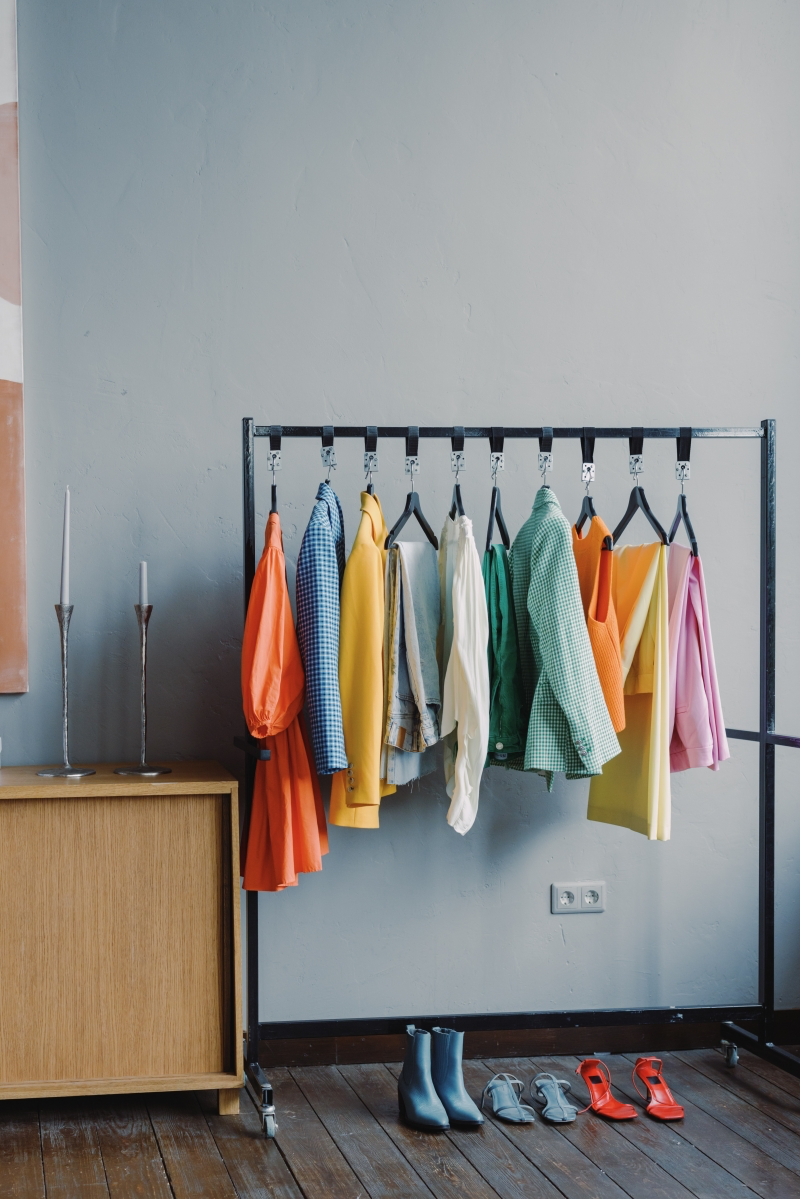
1. Lay the shirt flat, face down.
2. Fold each side toward the center to create a long rectangle.
3. Fold that rectangle in half or thirds until it’s a neat little packet that can stand up on its own in the drawer. You’ll never dig for a shirt again.
Don’t Forget the Accessories!
What about all the other stuff? Shoes, bags, and belts can create chaos if they don’t have a designated home.
For shoes, try to get them off the floor. Simple tiered shoe racks are great, but for a cleaner look, I love using clear, drop-front shoe boxes. They stack neatly, protect your shoes from dust, and you can see exactly what’s inside without unstacking everything. For handbags, avoid just hanging them by their straps, which can cause stretching and wear. Instead, use shelf dividers to stand them up in a line like books on a shelf. For smaller clutches, a simple file sorter on a shelf works wonders. And for belts? A wall-mounted rack or a simple roll-up inside a drawer divider keeps them tidy and accessible.

Keeping the Chaos at Bay (The 5-Minute Maintenance Plan)
So, you’ve done it. Your closet is a masterpiece of organization. How do you keep it that way? The secret is a tiny bit of daily and weekly maintenance.
The most important rule is the “one-in, one-out” policy. When you buy a new sweater, an old one has to go. This prevents the slow creep of clutter. Also, create a small “outbox” inside your closet—a simple basket where you can toss items you try on but decide not to wear, or things that need to be mended. Deal with that basket once a week. Finally, take just five minutes at the end of each day to put things back where they belong. Hang up the jacket you wore, put your shoes on the rack. It sounds small, but these tiny habits are what make a system last.
Inspiration:

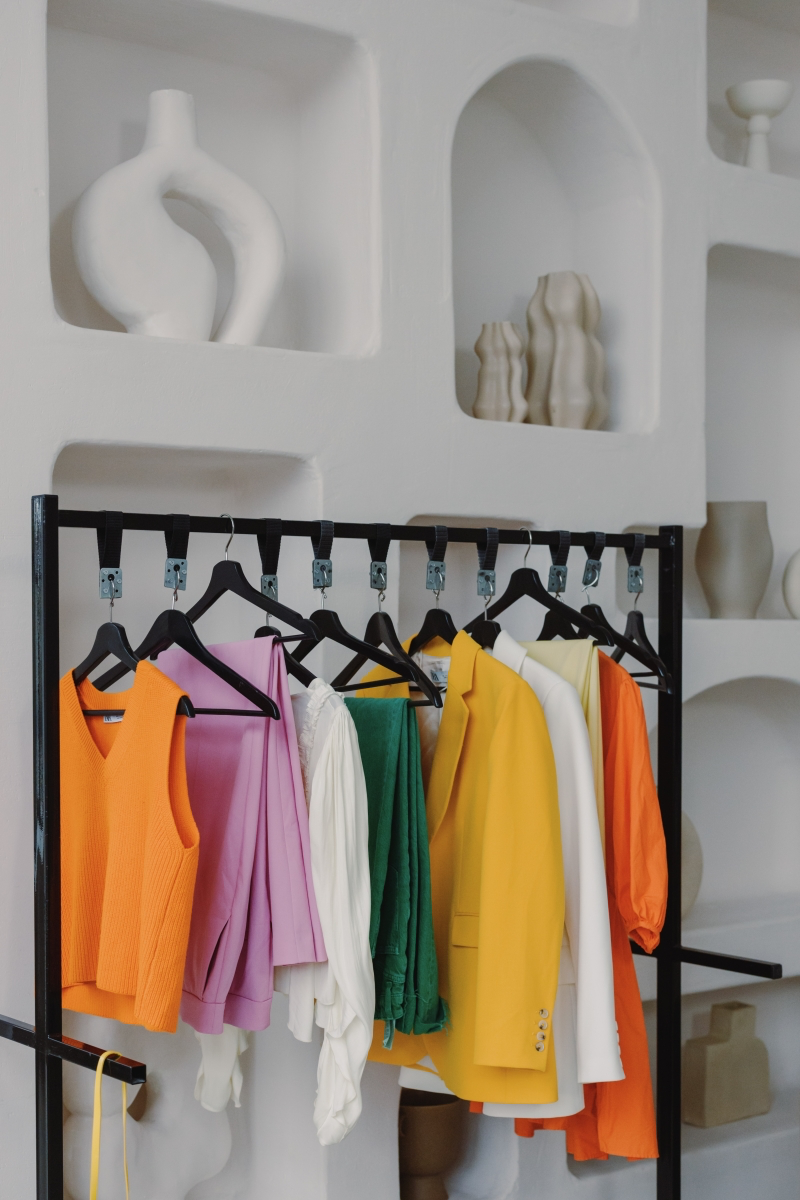
Velvet Hangers: Their ultra-slim profile can genuinely double the hanging space in a cramped closet, and the non-slip finish is a game-changer for silky blouses and wide-neck tops. Brands like AmazonBasics or The Container Store offer them in bulk.
Wooden Hangers: The gold standard for structure. Use sturdy wooden hangers, like those from IKEA or Zober, for heavy items like winter coats, blazers, and suits to help them maintain their shoulder shape over time.
The best strategy is often a mix: velvet for maximizing everyday space, and a set of quality wooden hangers for your investment pieces.
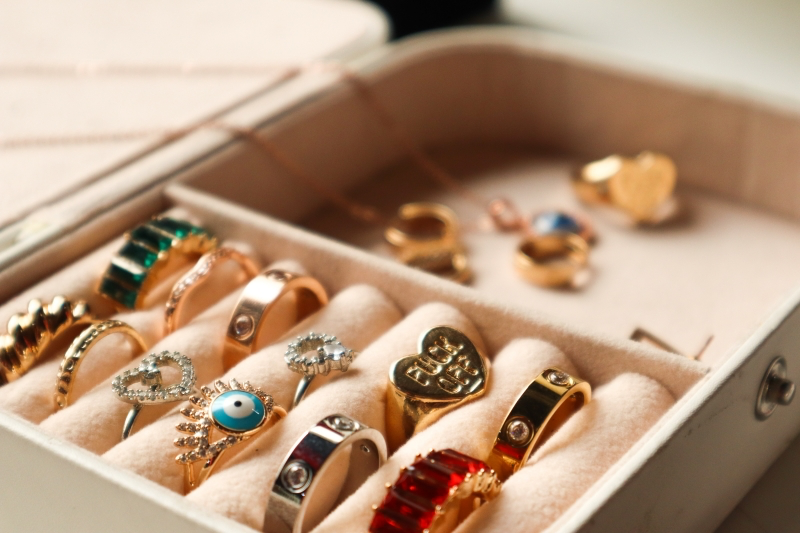
Cedar is more than just a pleasant scent; it’s a natural protector. The oils in cedar wood repel moths and other insects that can damage natural fibers like wool and cashmere.
Tuck a few cedar blocks or rings onto your hanger hooks to safeguard your favorite sweaters. Unlike chemical mothballs, their scent is delightful and they absorb excess moisture, preventing mustiness. Just give them a light sanding once a year to refresh their aromatic oils.

My folded clothes always end up in a messy pile. What’s the secret to neat shelves and drawers?
The answer is vertical folding, often called file-folding. Instead of stacking items like pancakes, fold them into neat, self-contained rectangles that stand up on their own. Arrange them in rows from front to back in your drawers, like files in a cabinet. This allows you to see every single t-shirt, pair of jeans, or sweater at a glance, so you never have to dig through a pile again. For deeper shelves, use shallow bins or drawer dividers from a brand like mDesign to create tidy, manageable rows.
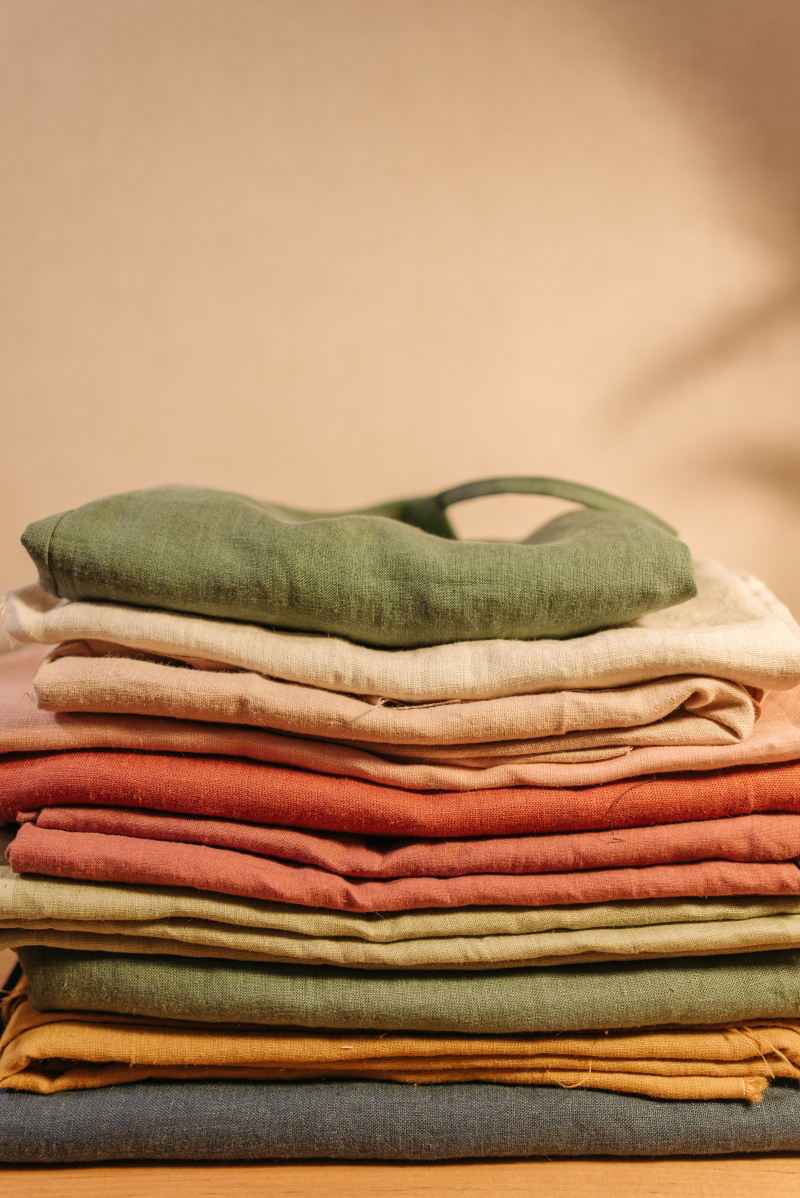
- You’ll never again have those unsightly stretched-out bumps on the shoulders of your favorite knits.
- Delicate fabrics are better protected from pulls and snags.
- It’s the single best way to store bulky sweaters without them taking over an entire shelf.
The trick? It’s the ‘hanger fold’. Instead of hanging a sweater traditionally, fold it in half lengthwise, lay the hanger hook in the armpit, and then drape the body and sleeves over the bar. Gravity does the rest, keeping your knitwear pristine.
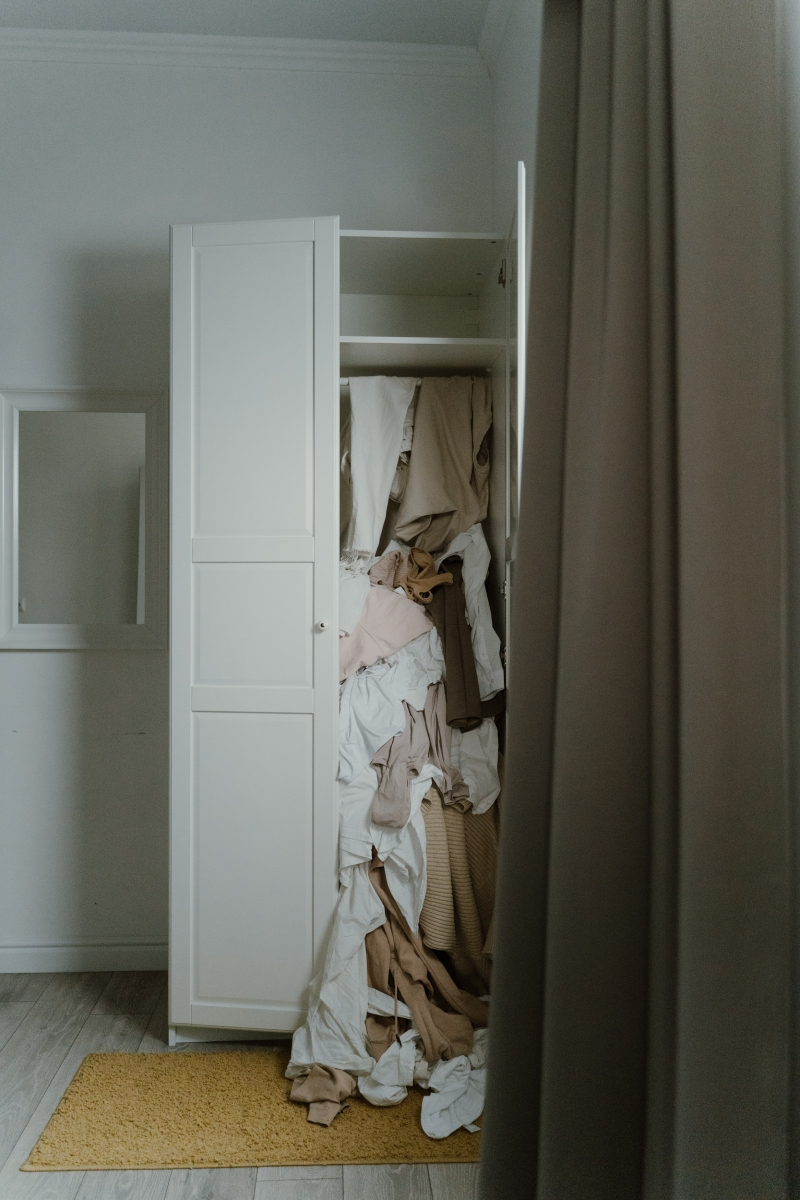
A study by the Ellen MacArthur Foundation found that one garbage truck of textiles is landfilled or incinerated every single second.
An organized closet is a surprisingly powerful tool for sustainability. When you know exactly what you own and can easily access it, you’re less likely to make impulse purchases or forget about perfectly good clothes. You begin to ‘shop your own closet,’ rediscovering pieces and extending their life, which is the most sustainable fashion choice you can make.
Don’t overlook the power of light. A dim, shadowy closet can make even the most organized space feel uninviting. Installing simple, battery-operated LED puck lights or motion-activated strips under each shelf is a weekend upgrade that makes a world of difference. Suddenly, colors appear truer and finding that specific black top among other black tops becomes effortless.










